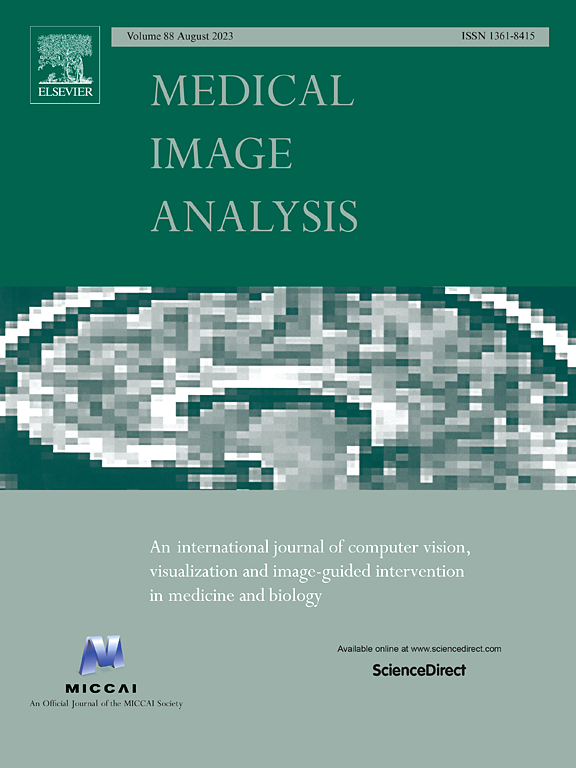ProstAtlasDiff: Prostate cancer detection on MRI using Diffusion Probabilistic Models guided by population spatial cancer atlases
IF 10.7
1区 医学
Q1 COMPUTER SCIENCE, ARTIFICIAL INTELLIGENCE
引用次数: 0
Abstract
Magnetic Resonance Imaging (MRI) is increasingly being used to detect prostate cancer, yet its interpretation can be challenging due to subtle differences between benign and cancerous tissue. Recently, Denoising Diffusion Probabilistic Models (DDPMs) have shown great utility for medical image segmentation, modeling the process as noise removal in standard Gaussian distributions. In this study, we further enhance DDPMs by introducing the knowledge that the occurrence of cancer varies across the prostate (e.g., 70% of prostate cancers occur in the peripheral zone). We quantify such heterogeneity with a registration pipeline to calculate voxel-level cancer distribution mean and variances. Our proposed approach, ProstAtlasDiff, relies on DDPMs that use the cancer atlas to model noise removal and segment cancer on MRI. We trained and evaluated the performance of ProstAtlasDiff in detecting clinically significant cancer in a multi-institution multi-scanner dataset, and compared it with alternative models. In a lesion-level evaluation, ProstAtlasDiff achieved statistically significantly higher accuracy (0.91 vs. 0.85, ), specificity (0.91 vs. 0.84, ), positive predictive value (PPV, 0.50 vs. 0.35, ), compared to alternative models. ProstAtlasDiff also offers more accurate cancer outlines, achieving a higher Dice Coefficient (0.33 vs. 0.31, ). Furthermore, we evaluated ProstAtlasDiff in an independent cohort of 91 patients who underwent radical prostatectomy to compare its performance to that of radiologists, relative to whole-mount histopathology ground truth. ProstAtlasDiff detected 16% (15 lesions out of 93) more clinically significant cancers compared to radiologists (sensitivity: 0.90 vs. 0.75, ), and was comparable in terms of ROC-AUC, PR-AUC, PPV, accuracy, and Dice coefficient (). Furthermore, we evaluated ProstAtlasDiff in a second independent cohort of 537 subjects and observed that ProsAtlasDiff outperformed alternative approaches. These results suggest that ProstAltasDiff has the potential to assist in localizing cancer for biopsy guidance and treatment planning.

求助全文
约1分钟内获得全文
求助全文
来源期刊

Medical image analysis
工程技术-工程:生物医学
CiteScore
22.10
自引率
6.40%
发文量
309
审稿时长
6.6 months
期刊介绍:
Medical Image Analysis serves as a platform for sharing new research findings in the realm of medical and biological image analysis, with a focus on applications of computer vision, virtual reality, and robotics to biomedical imaging challenges. The journal prioritizes the publication of high-quality, original papers contributing to the fundamental science of processing, analyzing, and utilizing medical and biological images. It welcomes approaches utilizing biomedical image datasets across all spatial scales, from molecular/cellular imaging to tissue/organ imaging.
 求助内容:
求助内容: 应助结果提醒方式:
应助结果提醒方式:


